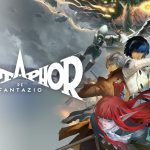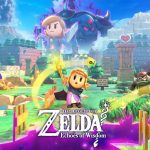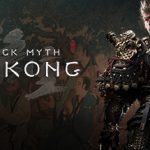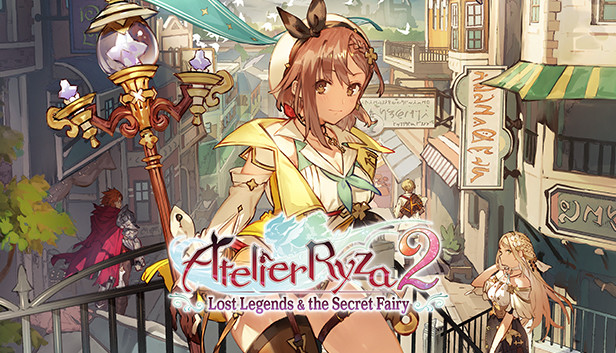There it is, my first review on this new website! I was actually gonna delay posting my first review for a big stupid joke, but Garfield Kart isn’t worth playing enough of to be able to actually review it (it’s free as of this writing on IndieGala if you want to waste your time). Unfortunate, but instead I get to review a game I like, so yay!
This is a sequel to a game I really enjoyed. The first Atelier Ryza was a pretty different game than other Atelier games I played, namely due to the lack of a time management mechanic. Despite the change, it was a really fun game that had a nice calm feel and cool combat and alchemy that was a bit different from before. I was going to the second one expecting much of the same as the first, maybe with some improvements.
So let’s go and check it out!
Developer: Gust
Publisher: Koei Tecmo Games
Release date: January 26th 2021
Platforms: Switch, PC, PS4, PS5 (PC version reviewed)
Genre: Console-style RPG
This game takes place 3 years after the first game. As per that ending, all the main characters went their own way, with only Ryza remaining on Kurken Island. Ryza is invited by Tao to visit him in the capital, as he wants to explore ruins that he believes might be related to alchemy. So she sets out to go there and go on adventures with Tao and eventually her other buddies, as well as a few new characters they start hanging out with. But before that, Klaudia’s dad (who I guess still lives on Kurken Island) gives Ryza an egg-shaped rock that he wants her to investigate because… the game needs a huge plot contrivance I guess? Basically that rock is actually an egg and it births Fi (because she happens to take this random egg to a random ruin that happens to react to it… what luck!), a small cute mascot character that thrives on Underworld mana. Thankfully for Ryza, the ruins of the area that Tao is researching happen to have crystals that can provide him with sustenance… Teaming up with Lent, Klaudia and new characters Clifford (a treasure hunter), Serri (an Oren trying to purify the underworld) and Patricia (a noble that Tao is tutoring), they explore ruins and end up saving the world because of Fi-related reasons. Bos, Empel and Lila all show up but only as side characters. I really like Bos but I wish he got more to do.
The story is fine, but it’s a fact that the entire plot happens because Ryza is randomly, for no real reason, given a thing that just randomly happens to do something special when going to the specific place she’s going… big plot contrivance. Why not just… have her find Fi’s egg in the ruins? That would be considerably less contrived and would logically follow that she could find something like that in an unexplored ruin. One thing I will say is that, by the end, basically nothing has changed for anyone. Lent goes through a very small arc, as do Patricia and Serri, but on the overall, the game ends with the status quo going back to what it was at the start.
By the end of the first game, Ryza is already a really powerful alchemist that actually created some really wild stuff. So what’s the excuse for her needing to be re-learn alchemy? Well it turns out Ryza is a fucking idiot and decided to come to the capital with LITERALLY NOTHING other than the clothes on her back, a shitty staff (when she could’ve brought a good one) and the Fi egg. No cauldron, no materials, no weapons, no money, no armor, no food, nothing. Not even a plan for somewhere to stay (thankfully Tao set something up). And then once she gets her atelier the excuse becomes “oh I have to get used to this new cauldron”. Ooookay. I get that they can’t just have Ryza being amazing at alchemy right away because then the gameplay would suffer, but… this is a bit weak of an excuse. Not really a problem, just something I thought I should mention.
The graphics are pretty nice, but I feel Kurken Island and its surrounding areas looked nicer than most areas in this one. Some of the places here are really nice, like the first real ruin you explore, and the second to last one with the dragon bones. The focus graphically is definitely on the character design… especially Ryza. The characters tend to look quite good, except Tao for some reason. I dunno, his face looks weird in this game… but hey at least he’s tall now. Patricia also looks like she’s constantly mad, it’s a bit strange. But yeah, everyone is attractive. The guys, the girls, all of them. If you like your waifus and husbandos, this game has some top-level ones like Klaudia and Bos.
Alchemy is basically like it was in the first game, for the most part. One new thing is how you learn some of the recipes. A lot of the important base recipes you get from a skill tree (with other recipes unlocked the same way as in the first game, either through regular progression, or unlocking them as you do alchemy), then you build up from there. You get SP for the skill tree by doing quests, seeing character events and doing alchemy. Some parts of the skill tree are locked behind progressing through the game and doing the exploration-related puzzles. The actual alchemy has you choosing one of your recipes, then you get this node grid. There’s usually 3 nodes you need to fill first (you can’t synthesize the item without those 3), then it opens up more nodes. Some nodes are locked behind needing the connected node to have certain elements put in it (with every ingredient giving some amount of different elements). Each node will require either specific materials, or a specific category of material. Putting materials into nodes increases the quality of the item and may add traits. Each node also has special effects when you fill them up with enough elements. Some of these may be extra quality, special attributes, stat boost on equipment, adding extra item categories to the items and trait slots. Once the item is ready to go, you get an overview, then you decide up to 3 traits to put on it. If you have open trait slots (traits being things like stat boosts and special combat effects) those traits will be unlocked, otherwise the traits do nothing. The most important node you’ll find in a recipe is the “recipe” node, which unlocks new alchemy recipes, I think that’s straightforward enough. Early in the game it’s hard to get a lot of these because you’re limited in the amount of materials you can put in a synthesis, but eventually this is how you unlock all the best stuff in the game.
The Atelier has some extra features for alchemy as well. You can transform any items into gems for other uses. The Item Rebuild function allows you to add more ingredients to previously-synthesized items to make them better (which costs gems). The blacksmith can improve weapons, armor and accessories by forging materials into them. You can duplicate items at the cost of gems. Battle items can be combined with each other, which gives different traits depending on what item was sacrificed. During normal synthesis, you can use elemental essences to change the color of different nodes, which changes the requirement of items to boost that node. I think there’s extra benefits to doing that, but I literally didn’t use that feature once (there’s an achievement for using it once and I don’t have it, lol).
Combat in the first Atelier Ryza was basically running on an ATB system similar to FF6, but a bit more action-y. This one changes some aspects around, but still runs pretty similar. Here the characters are a bit more dynamic, as even in-between moves they still stand closer to their targeted enemy, rather than being in a line. You still only control one character at a time (which you can very quickly switch between on the fly), with the AI of the controlling their other 2 in simple ways: if they’re in support mode, they do normal attacks only and if they’re in aggressive mode, they use specials if there’s AP available. This still runs largely with an ATB-style system, so you have a turn bar where you see when one of your characters will get a turn and when the enemies will attack. This is all real-time, so you better be ready when your turn comes… or you can press the item option if you need time to think. You gain AP in a few ways: normal attacks, order skills and defending against attacks are the main ways. Yeah this game has a Mario RPG-style defend system, where you have to press the defend button as an attack is hitting you. It seems to not do much damage-wise, but the extra AP is nice. That said, while it’s easy to know when an enemy will attack, it’s harder to figure out who they’ll attack, so it’s a bit rough to use. AP has a few uses, namely using special skills, but just gathering AP also increases your Tactic Level (in the first game it cost AP to raise it, here it just happens for free over time). Tactics Levels (goes up to 5) give you more max AP, more normal attacks, and some special skills may get powered up as well. Special skills have some uses. Obviously they deal good, generally elemental damage. Also they can trigger Order Skills. During battle, the character icon for your teammates might get a speech bubble asking you (IE the character you’re controlling) to do a certain kind of attack, which will combo into the Order Skill. Special skills can also be comboed, as long as you have AP available as you’re doing special attacks you can stack them.
The other use of special skills is the revamp of the battle item system. You still use Core Crystals like in the first game, so you can use items an infinite number of time, under a certain constraint. In the first game each item had a certain number of uses per outing (and you could recover some CC by sacrificing items for the rest of the outing). Here, none of that. Instead you build up CC by using special skills. Each skill tends to give you one CC, and items will have a certain cost based on which item it is, the item’s quality and whether you activated a node for the item that reduces CC cost. Items are super strong though, and when you use items you can use as many of them as you want as long as you have enough CC (and you can only use each item once in a “turn”, of course. Eventually you unlock super attacks to use when you use items. You equip one of them at a time which will determine what kind of items you need to launch said attack (once per battle). CC can also be gotten by powering up your Core Crystals on each character. You gain extra max CC when you upgrade a core crystal, but also an extra initial CC, which means you can more easily use items earlier in battle.
So battles tend to focus on accumulating AP, Tactic Levels, CC and finally launching big attacks with items. Combat is quite fast-paced, but remains nicely tactical based on character switching (something I didn’t even mention, but you get a fourth character in your party that stays on the sideline to switch your currently-controlled character with), item usage and such. And of course there’s one-time-per-fight super attacks for each character. You can use these either on your turn, or even while waiting for your turn, though it does require being at Tactics Level 5, and it drops you back down to Tactics Level 1. Hitting enemies enough, especially with items, might break them. A broken enemy gets his next turn heavily delayed (and can be delayed further with more damage). This becomes really important as you fight some of the stronger enemies. Overall combat is definitely really fun. There’s a couple thing I prefer in the original game, but I would say it’s an upgrade on the whole.
Outside of battle and alchemy there’s a lot to do. Exploring is one of the big ones, as that’s how you gather most of your materials for alchemy, which feeds into the battle system since alchemy is how you make battle items and equipment. You can use alchemy to make special tools, which you then use to destroy things in ruins and surrounding areas to get different materials. Each tool gives different kinds of items, even if they’re used on the same object. Hitting a tree with an axe might give you logs, while hitting it with your staff might give you fruit, and so on. Tools can also be upgraded to be able to gather more items from the same kinds of gathering points. Outside of town enemies are roaming free, so no random encounters, and if you hit an enemy with one of your tools you start the battle at Tactic Level 2 AND certain tools debuff the enemies. Ruins also have a separate exploration task, where you gotta find glowy things which give Ryza hints. You take those hints and find where they go in a notebook-like thing. Filling these notebook-ish things gives your SP and, more importantly, usually an alchemy recipe needed to progress through the current dungeon. A bit of a random element that I could do without, but it’s fine. It was kinda sad doing this for the final 2 dungeons since the SP rewards meant literally nothing. Oh joy, 1200 SP, let’s leave it there with my 24000 others!
In town, the café has a quest board for you. Quests can range from killing several normal enemies, killing minibosses (usually the best value) and finding/making items. Rewards for these are money or SP. SP is a bit of a shame, as at first you need a ton, but once you max out your skill tree, SP does nothing. SP is thankfully mostly for early café quests. In the fast travel map, each area of the town may have character icons next to them, or question marks. These are either cutscenes, or quests (some quests are also in outside areas). Those quests tend to be making or gathering items. They’re pretty simple, rewards tend to be SP or items you don’t need. There’s many stores in town, each specializing in different things, from ore to fish to monster materials. Romy’s store is special though, as she doesn’t really sell anything of note. You can trade in gold coins for special items you barely need, but more importantly you allow Romy to build up her merchant empire by giving her items. Items given that way do different things. Some items make stores stock new items entirely so that’s really useful, though the other thing giving these items does is increase the traits and quality level of store items, which has some uses like Danny the blacksmith having metal that isn’t complete crap… I mean, it’ll still suck compared to what you can make with alchemy, but it definitely has its uses.
So that’s about all there is. Game flow is mostly to explore the latest ruin or outside area, grab a bunch of materials through gathering and fighting, do lots of alchemy, watch lots of character interactions, and as you go you unlock access to more ruins so you can progress the plot. It’s some good stuff, the gameplay loop is quite solid, and some of the cutscenes have some fun character interactions… though there’s a bit too much “standing around and talking” which slows the pace.
One thing I’ll talk about quickly is the PC port… Might just be a problem with my specific PC being old and only having a 1070 and a shitty old i5 7600k (I’m getting a new PC soon, just waiting for Computers Canada to not be shit). Maybe there’s some weirdness with my hardware or something. In town it was fine, as it was in combat and cutscenes and alchemy, but in dungeons it would randomly go to a “now loading” screen while I was walking around. Basically the game would just… lag for several seconds at a time. When that lag would happen, it would also lag out whatever I was listening to on youtube. I don’t know why this happened, but man was it annoying. Your experience may vary.
Overall
I really liked Atelier Ryza 2, but at the same time it kinda leads me to wonder… what was the point of this game, plot-wise? It’s kinda weird. Ryza goes to the capital for a bit, then leaves, and no one has changed really other than Patricia, and Serri got what she wanted. Not much really happened here. What starts up the only conflict is literally a dumb contrivance. “Oh you’re leaving, take this thing I had in my basement, I have no idea what it is” and it turns out being extremely important and it being with Ryza in that specific part of the world is what causes all the problems. They could’ve done largely the same plot but not have to rely on contrivance. It’s so simple. Right now the plot is “the world is in danger because Ryza went to a place while carrying a random thing she was randomly given before leaving” and sadly that’s kinda dumb. Then in the end, it feels like not much really happened here.
Other than that though, I liked the game a lot. They improved on the combat from the first in many ways, making it a bit more active and making items a lot more useful (your mileage may vary on which system is better). Alchemy is largely the same as in the previous game, there’s some elements I literally didn’t touch with the elemental essences (I don’t have the achievement for using one, oops), but overall it’s fun and intuitive. Otherwise the exploration and material gathering is fine, I wish they’d have done away with the “let’s slow you down for no reason” parts like cliff edges or crawling segments. They literally just exist to place the camera in front of/behind Ryza for fanservice and it adds nothing meaningful to the game.
If you liked the previous Ryza game or the rest of the Atelier series, you’ll enjoy this. It doesn’t really add anything the series hasn’t seen before, and is just more of a good thing, pretty much. I’d say the first game is a bit better overall, but this is pretty close. Of course if you wanted a return to the time management style of other Atelier games, that’s not here, but regardless it’s still some good stuff.
I recommend this game 😀







Leave a reply